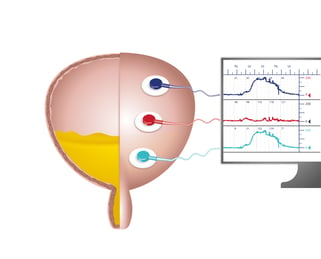 Urodynamics (UDS) testing is usually performed in conjunction with a slew of other urologic tests and functions in concert with other diagnostics. This blog post will explore other common tests used in patients who will be having UDS testing and explains the indications and data that come from those other assessments.
Urodynamics (UDS) testing is usually performed in conjunction with a slew of other urologic tests and functions in concert with other diagnostics. This blog post will explore other common tests used in patients who will be having UDS testing and explains the indications and data that come from those other assessments.
All patients who have UDS will undergo a comprehensive history, physical and laboratory testing. The history will focus on the specific urologic complaints the patient has, but also bowel issues, neurologic disorders and whatever medications the patient is on as well. Surgical history, especially related to urinary tract and anti-incontinence surgery is critical as is diet information. Lab testing will include a urinalysis to search for blood or infection, urine culture if infection is suspected, and many patients will have serum lab testing to assess kidney function.
Many patients will perform a simple uroflow measurement either with UDS testing or separately. This entails voiding into a funnel and measuring the volume, flow rate and flow pattern of a void. It is critical the patient has a full bladder for this, as small volume voids yield data that cannot be assessed. This is particularly useful after surgery to relieve urinary obstruction in men and women.
Residual urine measurement is very commonly done as well, either before or after UDS. This is usually done with a hand-held ultrasound device called a bladder scanner. The device is placed just above the pubic bone and provides a rough measure of the bladder’s volume. This can be used before or after voiding and is a non-invasive means of assessing how empty the bladder is after a void. The same data can be obtained with a catheter placed into the urethra; however, most patients prefer avoiding this as a stand-alone test and the bladder scanner can obviate this need.
Finally, cystoscopy is a critical urologic test that is often performed on patients who will have UDS testing. This is a roughly 5-minute office based endoscopic evaluation of the urethra and bladder, done in both men and women. Patients are placed supine for the test, have the genitals cleansed with antiseptic and usually take a single dose of oral antibiotics before the procedure. Local anesthetic gel is usually placed in the urethra, especially in men, and then a scope is introduced and a image transmitted to a video screen. The urologist can then assess the urethra for strictures, the prostatic anatomy in men, and in both men and women the bladder for the presence of stones, tumors, debris, capacity and evidence of diverticula or trabeculations.
These aforementioned tests are critical for the urologist to assess a patient’s voiding issues and go hand in hand with UDS in the workup of voiding dysfunction.


